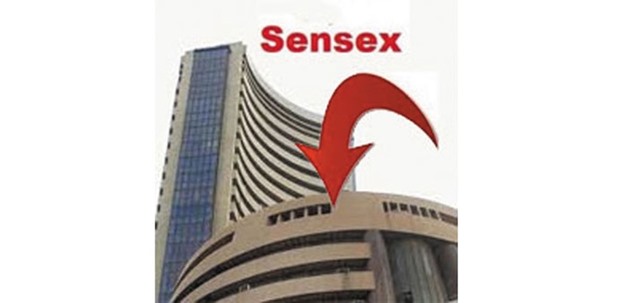Despite foreign funds’ inflow and an appreciation in rupee, the Indian equities markets fell yesterday, as heavy selling pressure was witnessed in oil and gas, metal and energy stocks.
Besides, profit-booking and negative global indices ahead of the highly-anticipated speech by British Prime Minister Theresa May on plans for Brexit (Britain’s exit from the European Union), also suppressed the key domestic indices.
In addition, investors were spooked by the cut in India’s growth estimate for the current fiscal year by 1% to 6.6% by the International Monetary Fund (IMF) after the market hours on Monday.
The key indices, which opened on a positive note supported by consensus over the rollout of GST (Goods and Services Tax), ceded their gains and traded on a flat note throughout the day’s trade.
The wider 51-scrip Nifty of the National Stock Exchange (NSE) fell by 14.80 points or 0.18%, to 8,398 points.
The barometer 30-scrip sensitive index (Sensex) of the BSE, which opened at 27,331.82 points, closed at 27,235.66 points – down 52.51 points or 0.19% from the previous close at 27,238.06 points.
The Sensex touched a high of 27,381.43 points and a low of 27,179.19 points during the intra-day trade.
The BSE market breadth was marginally tilted in favour of the bears – with 1,395 declines and 1,351 advances.
In terms of broader markets, the small-cap index outperformed the benchmark index.
The BSE small-cap index was up 0.33%, whereas the BSE mid-cap index remained unchanged.
On Monday, the benchmark indices closed on a flat-to-positive note on expectations of healthy third-quarter (Q3) results.
The NSE Nifty rose by 12.45 points or 0.15%, to 8,412.80 points, while the BSE Sensex was up 50.11 points or 0.18%.
“Markets ended lower yesterday after a positive opening,” Deepak Jasani, head of retail research at HDFC Securities, told IANS.
However, the Indian rupee strengthened by 16 paise to 67.96 against a US dollar from its previous close of 68.10 to a greenback.
“The Indian rupee made headways against the US dollar. Brexit had made the US dollar weaker, which is why the domestic currency got stronger,” sources said.

